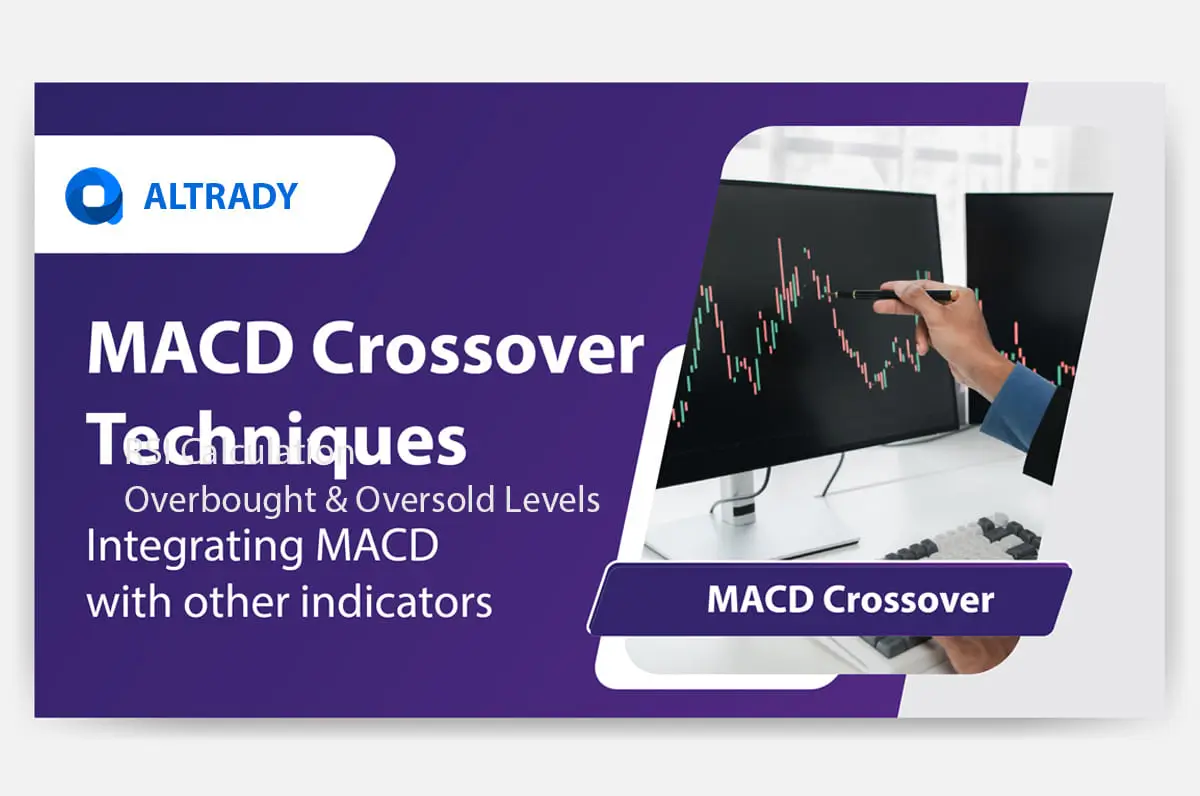Black Friday is loading…
Get 40% off with Altrady’s yearly plan and take the lead.
.svg)
.svg)
.svg)
.svg)
.svg)
.svg)
.svg)
.svg)
.svg)
.svg)
.svg)
.svg)
.svg)

The Moving Average Convergence Divergence (MACD) is a recognized indicator suitable for trends and momentum shifts. For the crypto market, this indicator can be convenient for overcoming volatility by adjusting its EMA components, making it susceptible to the fastest movements of the volatile conditions.
Being able to analyze the market based on the MACD properly will require the study and development of various advanced techniques that address trending conditions, price action reversals, and volatility.
In the following sections, we will explore different techniques based on this technical tool and provide practical examples of how traders can use it to build functional strategies and how to integrate it with other indicators.

The MACD crossover strategy relies on the interaction between the MACD lines—the MACD line and the signal line. When these lines intersect, traders receive MACD crossover signals that indicate possible momentum shifts. A bullish MACD crossover occurs when the MACD line crosses above the signal line, while a bearish crossover appears when it crosses below.
These identifying crossover signals help traders spot changes in market direction early. The accuracy of these signals can be further enhanced by observing the MACD histogram, which visually represents the difference between the MACD line and the signal line. The histogram helps confirm the strength and momentum behind each crossover.
Strategies based on MACD are one of the easiest but most powerful methods to get into the crypto market. The MACD indicator can provide signals at entry and exit points, confirmations on price actions, spotting reversal moves, and getting good risk-reward ratios, helping to handle risk management concerns.
So, how do traders develop MACD strategies? The best approach for creating a MACD strategy is to focus on the following:
Trying a MACD strategy without a curated trading plan can lead to an incorrect interpretation of the results. A trading plan establishes the rules for a successful application of the MACD strategy, and those rules will guide the execution of trades and the behavior of traders.
The trading plan will help to avoid most of the pitfalls traders can get involved in, like taking false signals and overtrading, especially for crypto markets where volatility plays a role.
After understanding why a trading plan is relevant, you might wonder: what should a trading plan contain?
To answer that question, we can point out the following:
The MACD offers the possibility to apply advanced approaches under the same concepts of divergence and line crossovers. Integrating the MACD with other indicators makes those concepts more sophisticated and helps confirm signals.
Let's decipher some of those advanced techniques on the crossover of the MACD Line (the difference between the 12 and 24 periods EMA) and the Signal Line (9-period EMA).

The double crossover is a technique based on combining the MACD with the Stochastic Oscillator. Known as The Double-Cross Strategy, it consists of the convergence of line crosses between the two indicators.
When the Stochastic identifies overbought and oversold levels in the price at the time that the MACD line is crossing the signal line, a powerful suggestion for a long or short position emerges.
If the MACD line crosses above the signal line, it suggests a long position. Otherwise, crossing below aims for a short position.
Moving averages alongside the MACD can confirm trend direction. An upward crossover in the MACD, while moving averages are crossing too, is a powerful signal for a long position.
During an upward crossover, high volume fortifies the bullish signal while low volume may signify a weak breakout. In the other scenario, high volume during a downward crossover hints at selling pressure, while low volume suggests a bear trap.
Similar to Stochastic, the RSI moves on oversold and overbought levels. For example, a bearish crossover while the RSI is at an overbought level (above 70), can be a signal for a short position.
| Analysis | MACD Signal | Risk Management | Confirmation | Entry and Exit |
|---|---|---|---|---|
| BTC is uptrending with increasing volume during positive events | The MACD line goes above the signal line in a bullish crossover. | Stop-loss order is placed below the last swing low at a risk tolerance of 1.5% The take profit is based on two targets of 2% each for a total of 4% |
The bullish crossover in the MACD is further confirmed with the RSI at an oversold level. | The long position is opened one the RRSI reaches the 40 level. The trade will exit automaticallly at the stop-loss or take profit orders. |
As we learned, the MACD is a reliable indicator primarily for trends but can be versatile when integrated with other indicators. In this article, we emphasized the importance of risk management and a trading plan as an aspect to consider when measuring the effectiveness of a MACD strategy.
In Altrady you can put all those concepts into practice through a free paper trading account that will help you refine your trading plan alongside the MACD strategy. Sign Up now and start a MACD trading path.